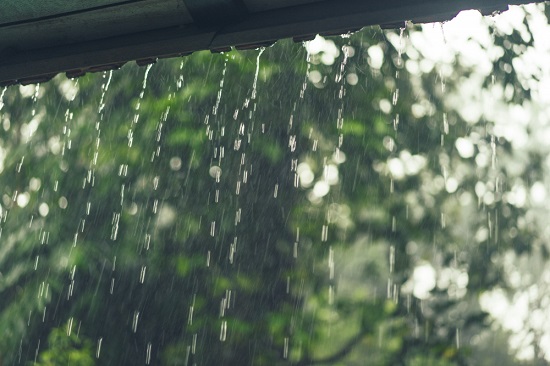Want to create a beautiful outdoor space that saves water and impresses the neighbors? This time of year, rising temperatures can cause a dramatic spike in outdoor water use, which is a drain on the environment and your wallet. Luckily, with a bit of planning and elbow grease, it’s easy to protect water resources and save money. This summer, take steps to reduce lawn maintenance with a drought-tolerant landscape at home.
What’s a Drought-Tolerant Landscape?
Drought-tolerant landscaping, also known as xeriscaping, is a low-maintenance way to create a natural outdoor space that flourishes without a lot of water.
Generally, a drought-tolerant landscape features non-invasive plants that can survive hot and dry situations due to adaptations of the plant. Most of these drought-tolerant plants have small, leathery, or hairy leaves, which help to reduce water loss. When selecting drought-tolerant plants, make sure they’re native to your region; this will help support local pollinators and insects, which will ensure that your drought-tolerant landscape continues to bloom during the hottest, driest time of year.
How to Create a Drought-Tolerant Landscape at Home
Did you know that the U.S. uses nearly nine billion gallons of water for home irrigation every day, according to environmental officials? Whether making small changes or committing to a full overhaul, drought-tolerant landscaping will keep your outdoor space looking great all summer long. However, before making plans, it’s important to research your plant hardiness zone. This will tell you which plants are most likely to thrive in your neighborhood.
Make sure your soil is nutrient-rich and self-sufficient. You can add compost, manure, or peat moss to help the soil hold moisture and retain rainwater. You may also want to use landscape fabric to ensure your efforts aren’t lost in the weeds or washed away in the rain or wind.
Compost and use mulch as a ground cover. Soil that is over-compressed discourages plant growth and diminishes curb appeal. In general, it’s best to use compost and cover the area with mulch after planting. This will help to prevent water evaporation. Organic mulches, including wood chips, will add organic matter to the soil over time.
Use curves and rocks to add texture. There are no straight lines in nature, so it’s a good idea to incorporate curves and rocks to add texture to your yard. If you’re incorporating a new walking path, it will add a natural aesthetic that is attractive and easy to maintain.
Keep similar plants together and include natural accents. Similar to the point above, neat rows and a no-no when it comes to crafting a drought-tolerant landscape. Instead, place plants with similar needs close together, then use accents, such as colorful rocks, as a finishing touch. Start slowly, adding a couple of plants here and there, and build as you go.
Use rain barrels. Rain barrels catch and collect stormwater that flows from your downspout; once it collects enough, you can use the water for yard care or for other household chores. On average, one rain barrel can save a homeowner up to 1,300 gallons of water each year, according to the U.S. Environmental Protection Agency. However, since a rain barrel must stay wherever your downspout is, think about placement in relation to where you will need water—it may not make sense if it will be located in a part of the yard where you can’t use it.

How to Remove Grass
It’s tedious to remove grass manually, but believe it or not, it’s the fastest way to get rid of it. If you want to eliminate your lawn, or part of it, follow these steps:
- Use a sod cutter to slice the grass you want to remove into manageable pieces.
- Place the end of the sod cutter at the point where you want to cut and make sure it is standing vertical and away from your body.
- Using your foot to help, push the sod cutter into the grass.
- Once you’re done with the vertical slices, place the blade at the border of your lawn and move it away from you; this will force the grass to tilt up and roll into strips.
Manual removal doesn’t always work, especially for perennial lawn grass, which has roots that go down several feet. If you’re having trouble removing grass manually, opt for a slower method, such as solarization or herbicide
Other Ways to Limit Lawn Maintenance
If you’re not ready to fully transition to a drought-tolerant landscape, there are other measures you can take to protect water resources and reduce lawn maintenance.
Cut down on lawn size. Start where your grass struggles to stay healthy. This may be under a tree, in an over-saturated corner of the yard, or around a rocky outcropping. You may also consider adding a garden structure, such as a trellis, a water fountain, or a lawn seat.
Create a garden bed. Design a garden bed to add a splash of color to your outdoor space. Flower beds fit well around the corners and edges of lawns and will thrive in areas that receive a lot of sunlight. When planting, add mulch to the base of the plants to discourage weed and grass growth. The larger the flower bed, the less lawn you have to manage.
Incorporate hardscape. Hardscape includes non-living elements, such as concrete, pavers, bricks, or decorative stones. These elements can be used to build a patio, lay a garden path, or set up a retaining wall to prevent erosion; a hardscape will never need watering or weeding, but you may want to sweep it once in a while.
Use ground cover. If you’re tired of mowing, consider replacing grass with a ground cover that requires little to no water or mowing once established. Most ground covers are inexpensive and are a popular option if you want to add texture and depth to a landscape.
If you live on a slope or have a lot of clay or sandy soil on your property, a ground cover is an easy way to maintain an outdoor space that is green and healthy. Additionally, ground covers tend to spread out to fill grassless and will discourage weed growth. Popular low-maintenance ground covers include:
- Flowering thyme (Thymus Spp.)
- Wickwar Flame (Calluna vulgaris)
- Creeping Phlox (Phlox Stolonifera)
- Renard Geranium (Geranium Renardii)
- Lily of the Valley (Convallaria Majalis)
- Ice Plant (Delosperma Cooperi)
- Jack Frost (Brunnera Macrophylla)











